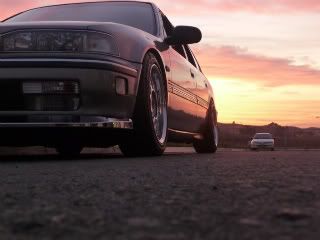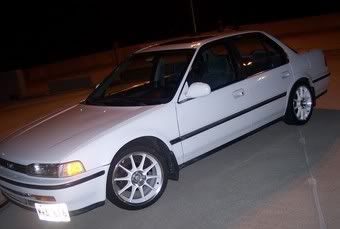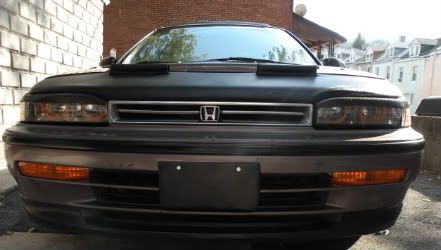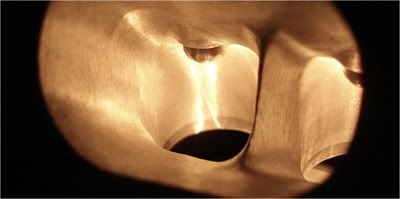Originally posted by d112crzy
Announcement
Collapse
No announcement yet.
balance shaft belt delete
Collapse
This topic is closed.
X
X
-
well, as stated before, there's a reason why honda put that belt there. Then again, by putting down the parts guy's, you know more than they do. that is why they are on the other side of the counter. Don't piss off parts guys nor Honda Tech's. believe me, they are the last resort, and after anyone's car has been through all the independant shops, and the car still isn't fixed, they bring it to the dealership. thumbs up, that's when us tech's make money and put down those shops, because it was just a simple problem that cause a bunch of failure. The beginning of a new era............................
The beginning of a new era............................
165 hp 149 ft. lb. torque sohc non vtec. then....
184 whp and 149 ft. lb. torque f20b stock now......
Comment
-
Originally posted by wed3kyea, id only suggest it for track use or "off-road" use only.
i agree with yall wed and oranger. i thought about just using this car as a DD and getting me another cb and using that as my speed car. lol. i needed to know abou this before i eneded up doing something to my car and blowing a motor.
are the vibrations noticable? i know its enough to shake loose some bolts if their not down tight enough like [cp]mike said. but can you feel them? are they annoying?
Comment
-
well my car already vibrates a ton (my parents expressed concern for my kidneys when i first put it together) so i cant judge how much of a change the belt removal actually made. but i never had a problem with bolts walking out, but now a couple have. its nothing too serious just make sure you dont leave bolts loose.Originally posted by Shadow1i agree with yall wed and oranger. i thought about just using this car as a DD and getting me another cb and using that as my speed car. lol. i needed to know abou this before i eneded up doing something to my car and blowing a motor.
are the vibrations noticable? i know its enough to shake loose some bolts if their not down tight enough like [cp]mike said. but can you feel them? are they annoying?
- 1993 Accord LX - White sedan (sold)
- 1993 Accord EX - White sedan (wrecked)
- 1991 Accord EX - White sedan (sold)
- 1990 Accord EX - Grey sedan (sold)
- 1993 Accord EX - White sedan (sold)
- 1992 Accord EX - White coupe (sold)
- 1993 Accord EX - Grey coupe (stolen)
- 1993 Accord SE - Gold coupe (sold)
Current cars:
- 2005 Subaru Legacy GT Wagon - Daily driver
- 2004 Chevrolet Express AWD - Camper conversion
Comment
-
Originally posted by cp[mike]well my car already vibrates a ton (my parents expressed concern for my kidneys when i first put it together) so i cant judge how much of a change the belt removal actually made. but i never had a problem with bolts walking out, but now a couple have. its nothing too serious just make sure you dont leave bolts loose.
lmao@kidneys. lol. but ill be sure to keep that in mind man. than to you all for this info
Comment
-
heres a question...
why would you delete what Honda blueprinted and researched before building the engine??
thats just making the engine LESS reliable! or causing problems down the road!
I dunno...me personally..I wouldn't take the balanceshaft belt off it if you're using it for a daily driver!
if thats your daily driver....dont alter it to where it makes it LESS reliable!
if however...you do have another CB for a toy...do the experimenting on that "TOY" rather to your everyday transporter!
us wrench vets may be smart and know what we are doing..but are we really smarter than the Honda engineers? NO!
the balance shaft and belt is there for a reason.....and a GOOD REASON.
I wouldn't tamper with it. instead...replace the seals and re-enforce it with either that retainer or some good ol' JB weld tabs..( 4 small tabs keep the seal from walking out)
*** personal experience and work!92 LX. A6 with GUDE bullfrog Cam. M2S4 transmission..Gutted H23 intake mani. The rest you will just have to find out!

MR Thread:
http://www.cb7tuner.com/vbb/showthread.php?t=174586
My tribute page: http://www.cb7tuner.com/vbb/showthread.php?t=70489
Comment
-
The balance shafts aren't really there for reliability, but more for comfort.
If you do nothing else, make sure you get the seal retainer, I have a nice of basically useless metal that used to be an F22 in my garage that lost it's life because the seal walked out.
Quick evacuation of oil = badddddddd1993 Prelude S
F22A1
custom'ish turbo setup
180 whp/217 ft-lbs super hot, super humid, super rich, boost falling off at 8psi
18psi boost spike = BOOM!!!!!
currently being rebuilt
Comment
-
boosting a motor makes it less reliable(someone correct me if im wrong), spraying nitrous makes a motor less reliable. adding more HP and TQ to a motor makes it less reliable. its all on how the person drives the car is how long the motor actually last.
a few guys on hondasociety.com have taken their balance shaft belts off and have had them off for the past 3 years. with no problems. so reliablity isnt a problem. just comfort.
Comment
-
well...do what you gotta do playa!Originally posted by Shadow1boosting a motor makes it less reliable(someone correct me if im wrong), spraying nitrous makes a motor less reliable. adding more HP and TQ to a motor makes it less reliable. its all on how the person drives the car is how long the motor actually last.
a few guys on hondasociety.com have taken their balance shaft belts off and have had them off for the past 3 years. with no problems. so reliablity isnt a problem. just comfort.
if you want to prevent the seal from walking out ....from just removing the belt....thats still sidestepping the problem.
if...you have a balanceshaft seal problem...replace it..and do it correctly with the retainer.
but
make sure you tighten down everything like Computer Programmer Mike said!Last edited by SN2BH22CB7; 10-23-2007, 03:54 PM.92 LX. A6 with GUDE bullfrog Cam. M2S4 transmission..Gutted H23 intake mani. The rest you will just have to find out!

MR Thread:
http://www.cb7tuner.com/vbb/showthread.php?t=174586
My tribute page: http://www.cb7tuner.com/vbb/showthread.php?t=70489
Comment
-
Originally posted by mulletThe balance shafts aren't really there for reliability, but more for comfort.
If you do nothing else, make sure you get the seal retainer, I have a nice of basically useless metal that used to be an F22 in my garage that lost it's life because the seal walked out.
Quick evacuation of oil = badddddddd
exactly....to rid of unnecessary vibrations....that could rattle something loose!
I dunno...I just dont think PERSONALLY its a good idea to take off the balanceshaft belt.

but thats just me.92 LX. A6 with GUDE bullfrog Cam. M2S4 transmission..Gutted H23 intake mani. The rest you will just have to find out!

MR Thread:
http://www.cb7tuner.com/vbb/showthread.php?t=174586
My tribute page: http://www.cb7tuner.com/vbb/showthread.php?t=70489
Comment
-
no one ever said anything about the seal leaking. its just a way of keeping it from walking out like its prone to do.
i was looking at it from a performance point of view. if it wasnt going to give me any type of increase(even if its one then itll do. lol) then i wasnt even going to do it. its always reversable tho. if i dont like the vibrations then i could always put it back on. no biggie.
Comment
-
a little info i found take what you want from it
Balance shafts are most common in inline four cylinder engines which, due to the asymmetry of their design, have an inherent second order vibration (vibrating at twice the engine RPM) which, contrary to popular belief, cannot be eliminated no matter how well the internal components are balanced. This vibration is generated because the movement of the connecting rods in an inline engine is not symmetrical throughout the crankshaft rotation; thus during a given period of crankshaft rotation, the descending and ascending pistons are not always completely opposed in their acceleration, giving rise to a net vertical inertial force twice in each revolution whose intensity increases quadratically with RPM, no matter how closely the components are matched for weight.
The problem increases with larger engine displacement, since the only ways to achieve larger displacement are with a longer piston stroke, increasing the difference in acceleration, or by a larger bore, increasing the mass of the pistons; either way, the magnitude of the inertial vibration increases. For many years, two litres was viewed as the 'unofficial' displacement limit for a production inline four-cylinder engine with acceptable NVH characteristics.
The basic concept behind balance shafts has existed for nearly a century and is no longer patentable. Two balance shafts rotate in opposite directions at twice engine speed. Equally sized eccentric weights on these shafts are sized and phased so that the inertial reaction to their counter-rotation cancels out in the horizontal plane, but adds in the vertical plane, giving a net force equal to but 180 degrees out of phase with the undesired second-order vibration of the basic engine, thereby canceling it. The actual implementation of the concept, however, is concrete enough to be patented. The basic problem presented by the concept is adequately supporting and lubricating a part rotating at twice engine speed at the higher RPMs where the second order vibration becomes unacceptable.
There is some debate as to how much power the twin balance shafts cost the engine. The basic figure given is usually around 15 hp (11 kW), but this may be excessive for pure friction losses. It is possible that this is a miscalculation derived from the common use of an inertial dynamometer, which calculates power from angular acceleration rather than actual measurement of steady state torque. The 15 hp (11 kW), then, includes both the actual frictional loss as well as the increase in angular inertia of the rapidly rotating shafts, which would not be a factor at steady speed. Nevertheless, some owners modify their engines by removing the balance shafts, both to reclaim some of this power and to reduce complexity and potential areas of breakage for high performance and racing use, as it is commonly (but falsely) believed that the smoothness provided by the balance shafts can be attained after their removal by careful balancing of the reciprocating components of the engine.
GOT BOOST???
massive part out on accord almost everything is going
http://www.cb7tuner.com/vbb/showthread.php?t=125294
Comment
-
Originally posted by Dep22builda little info i found take what you want from it
Balance shafts are most common in inline four cylinder engines which, due to the asymmetry of their design, have an inherent second order vibration (vibrating at twice the engine RPM) which, contrary to popular belief, cannot be eliminated no matter how well the internal components are balanced. This vibration is generated because the movement of the connecting rods in an inline engine is not symmetrical throughout the crankshaft rotation; thus during a given period of crankshaft rotation, the descending and ascending pistons are not always completely opposed in their acceleration, giving rise to a net vertical inertial force twice in each revolution whose intensity increases quadratically with RPM, no matter how closely the components are matched for weight.
The problem increases with larger engine displacement, since the only ways to achieve larger displacement are with a longer piston stroke, increasing the difference in acceleration, or by a larger bore, increasing the mass of the pistons; either way, the magnitude of the inertial vibration increases. For many years, two litres was viewed as the 'unofficial' displacement limit for a production inline four-cylinder engine with acceptable NVH characteristics.
The basic concept behind balance shafts has existed for nearly a century and is no longer patentable. Two balance shafts rotate in opposite directions at twice engine speed. Equally sized eccentric weights on these shafts are sized and phased so that the inertial reaction to their counter-rotation cancels out in the horizontal plane, but adds in the vertical plane, giving a net force equal to but 180 degrees out of phase with the undesired second-order vibration of the basic engine, thereby canceling it. The actual implementation of the concept, however, is concrete enough to be patented. The basic problem presented by the concept is adequately supporting and lubricating a part rotating at twice engine speed at the higher RPMs where the second order vibration becomes unacceptable.
There is some debate as to how much power the twin balance shafts cost the engine. The basic figure given is usually around 15 hp (11 kW), but this may be excessive for pure friction losses. It is possible that this is a miscalculation derived from the common use of an inertial dynamometer, which calculates power from angular acceleration rather than actual measurement of steady state torque. The 15 hp (11 kW), then, includes both the actual frictional loss as well as the increase in angular inertia of the rapidly rotating shafts, which would not be a factor at steady speed. Nevertheless, some owners modify their engines by removing the balance shafts, both to reclaim some of this power and to reduce complexity and potential areas of breakage for high performance and racing use, as it is commonly (but falsely) believed that the smoothness provided by the balance shafts can be attained after their removal by careful balancing of the reciprocating components of the engine. good find!
good find!
 **Blk Housed Slut Crew Member #1**
**Blk Housed Slut Crew Member #1**

 **Don't b scared be prepared for the worst**
**Don't b scared be prepared for the worst**
Da Drizzle's Sedan - Dr. Diy's Blk Housed Thread
'90 2Tone Coupe-Car Heaven_'89 Lude-Junk Yard
Mostly Usdm, some Jdm,Edm,&Puerto Rican RICE
Comment
-
Originally posted by Dep22builda little info i found take what you want from it
Balance shafts are most common in inline four cylinder engines which, due to the asymmetry of their design, have an inherent second order vibration (vibrating at twice the engine RPM) which, contrary to popular belief, cannot be eliminated no matter how well the internal components are balanced. This vibration is generated because the movement of the connecting rods in an inline engine is not symmetrical throughout the crankshaft rotation; thus during a given period of crankshaft rotation, the descending and ascending pistons are not always completely opposed in their acceleration, giving rise to a net vertical inertial force twice in each revolution whose intensity increases quadratically with RPM, no matter how closely the components are matched for weight.
The problem increases with larger engine displacement, since the only ways to achieve larger displacement are with a longer piston stroke, increasing the difference in acceleration, or by a larger bore, increasing the mass of the pistons; either way, the magnitude of the inertial vibration increases. For many years, two litres was viewed as the 'unofficial' displacement limit for a production inline four-cylinder engine with acceptable NVH characteristics.
The basic concept behind balance shafts has existed for nearly a century and is no longer patentable. Two balance shafts rotate in opposite directions at twice engine speed. Equally sized eccentric weights on these shafts are sized and phased so that the inertial reaction to their counter-rotation cancels out in the horizontal plane, but adds in the vertical plane, giving a net force equal to but 180 degrees out of phase with the undesired second-order vibration of the basic engine, thereby canceling it. The actual implementation of the concept, however, is concrete enough to be patented. The basic problem presented by the concept is adequately supporting and lubricating a part rotating at twice engine speed at the higher RPMs where the second order vibration becomes unacceptable.
There is some debate as to how much power the twin balance shafts cost the engine. The basic figure given is usually around 15 hp (11 kW), but this may be excessive for pure friction losses. It is possible that this is a miscalculation derived from the common use of an inertial dynamometer, which calculates power from angular acceleration rather than actual measurement of steady state torque. The 15 hp (11 kW), then, includes both the actual frictional loss as well as the increase in angular inertia of the rapidly rotating shafts, which would not be a factor at steady speed. Nevertheless, some owners modify their engines by removing the balance shafts, both to reclaim some of this power and to reduce complexity and potential areas of breakage for high performance and racing use, as it is commonly (but falsely) believed that the smoothness provided by the balance shafts can be attained after their removal by careful balancing of the reciprocating components of the engine.
oh snap....dag. theres your answer right there...
Comment
-
This is a completely retarded statement.Originally posted by SN2BH22CB7heres a question...
why would you delete what Honda blueprinted and researched before building the engine??
thats just making the engine LESS reliable! or causing problems down the road!
Putting on an intake and an aftermarket air filter makes your car less reliable.
Why would you change that if the engineers at Honda are so smart
Why would you change ANYTHING on our cars that's not OEM?
Balance shafts are nothing more than for comfort.
fuck em.
CrzyTuning now offering port services
Comment




Comment